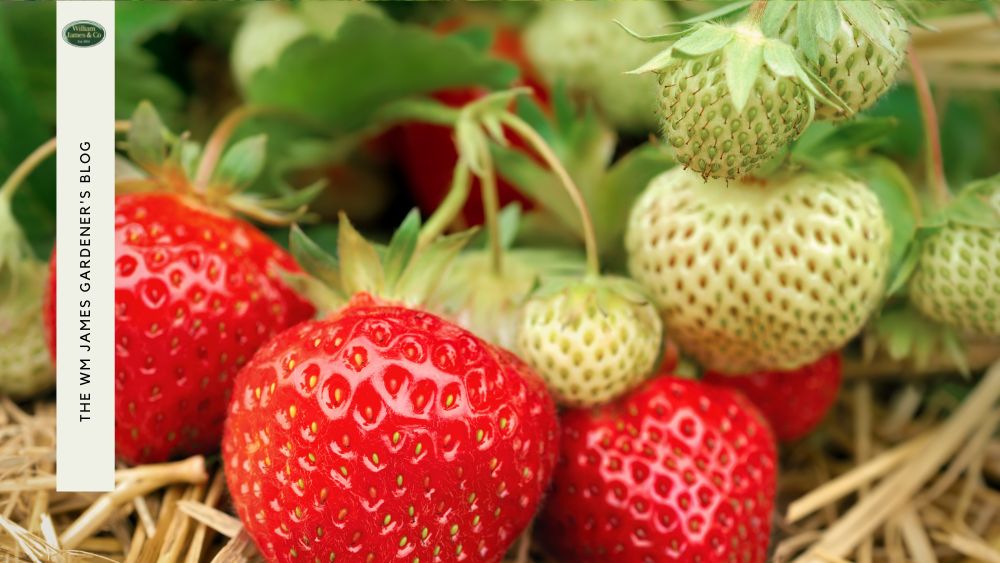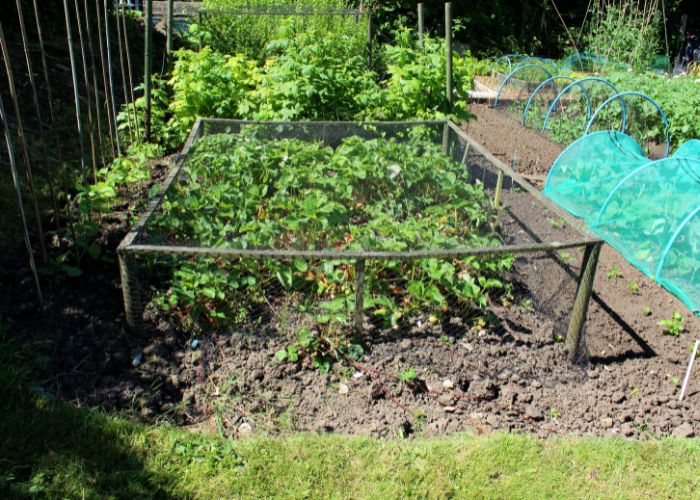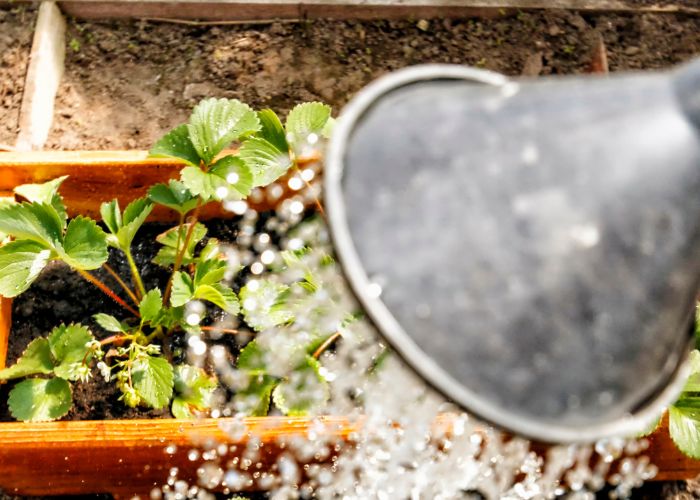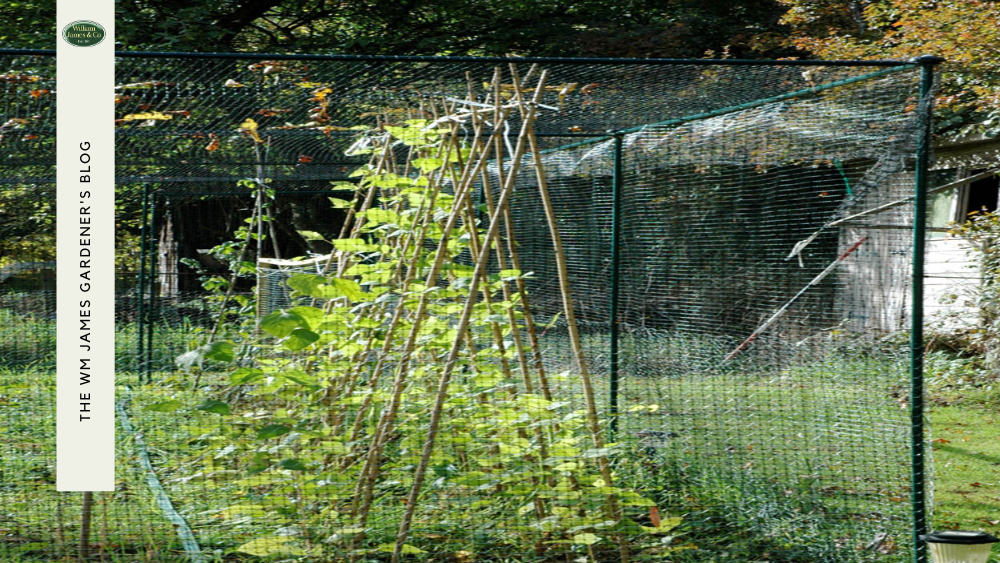We use cookies to make your experience better. To comply with the new e-Privacy directive, we need to ask for your consent to set the cookies. Learn more.
How to Easily Protect Your Sweet & Juicy Fruit With Netting for Strawberries
- Admin
- WM James Gardening Blog
- 14 Mar 2023
-
147views

Learn how to keep your strawberries safe from birds and wildlife with netting! Our easy-to-follow guide walks you through the simple steps for protecting your sweet, juicy fruit with netting. Get the tips you need to enjoy a bumper crop of delicious strawberries at W M James.
Strawberries are one of the easiest and most rewarding fruits to grow in your garden. Plus, these plants don't take up much room, so if you only have a small garden space, you can still have a thriving strawberry patch.
However, without the proper protection, your juicy berries may fall prey to birds and other garden pests, like flies, slugs, and aphids.
Luckily, netting for strawberries is an affordable and easy solution that will keep your crop safe from predators. It's super easy to set up, and you can even use it with existing fruit frames or support structures.
Read on for our tips on how to grow the most delicious and abundant crop of strawberries and how to use strawberry netting to keep your fruit safe and sound, ready for harvesting.
When to Grow Strawberries
The best time to plant strawberries is in the autumn or spring. If you are planting from seed, then autumn is probably best, but you can also buy potted strawberry plants from most garden centres that you can replant at home.
Strawberry plants will produce fruit between June and July, and you can start propagating once that process has finished.
Do Birds Eat Strawberries?
Birds love to eat strawberries and many other berries besides that - particularly other red berries.
Berries are an important cornerstone of any bird’s diet, as they give them plenty of nutritious vitamins. The sugar in berries also helps them keep their energy levels high.
However, hungry birds are not the only garden animal that will enjoy eating your strawberries. Slugs and snails are the most common culprits if you discover something has been noshing on your strawberry plants.
You can tell that they have been in because they leave a slimy silver trail behind them. They are even desirable to mice and squirrels, leaving your garden in a mess.
How to Use Netting for Strawberries to Protect Your Fruit
Strawberry nets are one of the most effective ways to protect your fruit from pests as well as adverse weather conditions.
They have a mesh that is small enough to protect them from insects as well as birds, and they are lightweight enough to prevent damage to the plants themselves.
Here are a few of the strawberry protection netting options you can consider.
Cover Your Plants with an Existing Fruit Frame
Netting is very easy to install, especially if you already have a fruit frame on hand.
First, you will need to ensure that your fruit frame is the right size to give them enough cover, without being so big that you would need to buy a huge amount of strawberry netting.
It is easy to attach strawberry netting to an existing fruit frame. You can either tie it off, or you can use fixtures to attach it more firmly. Using metal stakes may also be worth driving the netting into the ground.
At WM James, we're experts in garden netting, so we know what it takes to manufacture netting that does the job perfectly.
We have a range of fruit netting that you can drape over your fruit frame where your strawberries are growing. We recommend our 7mm mesh Butterfly Netting.
Create a Net Tunnel
A net tunnel is one of the most popular options for protecting strawberry plants if you are growing a large number of plants from seed.
It provides a lot of cover over a lot of space, and its curved nature of it may discourage birds from trying to land on it. It also means that you can easily keep an eye on how they are doing while keeping your plants outside in the open air.
While you can buy net tunnels, it is easy enough to put one together yourself. You can buy or make curved frames to hang strawberry netting from. Make sure that the netting goes all the way down to the ground.
You can use our fruit cage netting to create your own net tunnel to arch over your strawberry plants and ensure that they are protected from pests.
Create Strawberry Covers
Strawberry covers are arguably the simplest way of protecting your strawberry plants and may be the best option if you have a small patch that you are working with. With a strawberry cover, there is no need for a grand structure.
You just need to provide enough support to keep the netting from smothering the plants.
To put some strawberry covers together, find a netting that you can work with that is lightweight but durable. Make sure that it will allow light and moisture through.
Then, all you need to do is to drive it into the ground using stakes, and either prop or hang the netting above the plants.
How to Look After Your Strawberry Plant
Strawberry plants are incredibly rewarding to grow and will yield delicious fruit in the height of summer, but you do need to make sure that you are looking after them if you want results.
In addition to protecting them from birds, insects, and any other garden pest that might want a sweet fruity treat, there are some other issues that you need to look out for.
Compared to some other plants, strawberries are relatively easy to cultivate, but if you really want to make sure that you get the sweetest, juiciest fruits possible, then you will need to focus your attention on a few key areas.
Watering
To make sure that your plants are growing as healthily as possible, you need to water your strawberries regularly.
This is particularly important during the hot summer months, and when the new plants are starting to develop. However, take care not to water the middle of the plant, and don’t get any new fruit wet.
If you are not careful, grey mould can form, which can ruin the plant.
Sunlight
Strawberry plants love sunlight, so if your garden does not get a lot of natural light, you may want to consider looking at another plant to grow.
Ideally, you should plant your strawberries in an area that is either lightly shaded or well sheltered but which gets plenty of light throughout the day.
If your plants start getting scorched, it may be worth investing in some wind-resistant netting.
Mulch & Fertiliser
Mulch and fertiliser are important in the growth of healthy strawberry plants, particularly in their early stages.
If you are not growing them in pots, then give them some feed at the start of spring. Look for a fertiliser that has plenty of potassium in it.
If you are growing in pots, containers, or a grow bag, then there are plenty of feed options available. Tomato feed will work just as well.
Pruning
Pruning can take place towards the end of the summer when all of the fruit has been harvested. This is an important part of the process, particularly if you want to have another growth next year.
Cut away any dead foliage and leave a few centimetres above the ground. Give them a feed after you have pruned.
The plants will continue to grow during the autumn and winter, ready for a new harvest next summer.
Summary: Gardener's Advice for Netting and Growing Strawberries
Strawberries are fairly easy to grow and are such a treat in the summer, but they are so enticing to a whole host of birds and insects.
They can also be vulnerable to mould and other issues, so you need to keep a careful eye on them from planting through to harvesting.
If you want to provide cover for your strawberries, there are plenty of netting options that are easy to install, and which will keep birds, insects, and other pests from getting in. They can also protect your plants from heat, wind, rain, and frost.
Take a look at the huge range of garden netting available here at WM James! Whether you're looking to protect your strawberry plants or another type of fruit or vegetable, you can find the perfect net for your garden.
FAQs
What is the best netting for strawberries?
The best netting for strawberries will depend on the size of the area that you want to cover. The fine is probably the best bet to protect a small strawberry patch from insects, but you may also want to look at bird netting if you have found that you have some bigger pests interested in your garden.
When should I net my strawberries?
You should definitely net your strawberries before they turn that wonderful red colour, as they will be irresistible to predators once they are ripe.
However, you should really put some netting in as soon as you plant them, as they will be susceptible to insects as well as any sudden changes in the weather.
What is strawberry netting used for?
Strawberry netting is used to keep birds, insects, and other pests off your plants. Different types of netting are available for specific kinds of pests, such as bird netting and fine insect netting.
However, strawberry netting can also keep your plants in good condition despite the frost, hail, rain, wind, and intense sunshine.
How do I protect my strawberries from birds in my pots?
There are a few different ways that you can protect your strawberries from birds if you are growing them in pots. The easiest may be repurposing an existing frame.
If you put your pots inside the frame and hang some bird-proof netting over it, then they will not be able to get at them.













